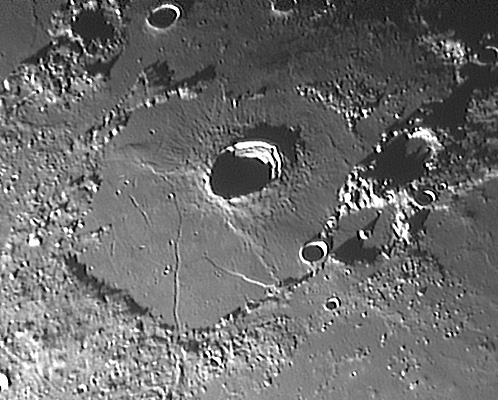Difference between revisions of "January 30, 2004"
| (11 intermediate revisions by the same user not shown) | |||
| Line 1: | Line 1: | ||
__NOTOC__ | __NOTOC__ | ||
=Lake of Death= | =Lake of Death= | ||
| + | <!-- Start of content --> | ||
<table width="85%" border="0" align="center" cellpadding="6" cellspacing="2"> | <table width="85%" border="0" align="center" cellpadding="6" cellspacing="2"> | ||
<tr> | <tr> | ||
| Line 13: | Line 14: | ||
<table width="100%" border="0" cellpadding="8"> | <table width="100%" border="0" cellpadding="8"> | ||
<tr> | <tr> | ||
| − | <td><div align="center | + | <td><div align="center"><p>Image Credit: [mailto:kcpaulhk@yahoo.com.hk K.C. Pau]</p></div></td> |
</tr> | </tr> | ||
</table> | </table> | ||
| − | |||
<table class="story" border="0" bgcolor="#FFFFFF" width="90%" cellpadding="10" align="center"><tr><td> | <table class="story" border="0" bgcolor="#FFFFFF" width="90%" cellpadding="10" align="center"><tr><td> | ||
<p class="story" align="center"><b>Lake of Death</b></p> | <p class="story" align="center"><b>Lake of Death</b></p> | ||
| Line 27: | Line 27: | ||
the Imbrium basin. Notice also that the walls of Lacus Mortis do not define a circle or an ellipse - they have distinct | the Imbrium basin. Notice also that the walls of Lacus Mortis do not define a circle or an ellipse - they have distinct | ||
straight edges. These linear wall segments are part of the lunar grid system, marked also by the polygonal sides of | straight edges. These linear wall segments are part of the lunar grid system, marked also by the polygonal sides of | ||
| − | Ptolemaeus, the [ | + | Ptolemaeus, the [[January_11,_2004|Straight Wall]], the Alpine Valley and other straight features. Some |
of these linear features are related to basins, but others could have formed by tidal stressing early in lunar history | of these linear features are related to basins, but others could have formed by tidal stressing early in lunar history | ||
when the Moon was much closer to Earth. | when the Moon was much closer to Earth. | ||
| + | </p> | ||
<p><b>Technical Details:</b><br> | <p><b>Technical Details:</b><br> | ||
Imaged 18 July 2003 in Hong Kong with a 212 mm Newtonian Cassegrain and a 2x Barlow and Phillips Toucam Pro | Imaged 18 July 2003 in Hong Kong with a 212 mm Newtonian Cassegrain and a 2x Barlow and Phillips Toucam Pro | ||
webcam. 212 frames were stacked and the seeing was good (8/10) and transparency fair (5/20). </p> | webcam. 212 frames were stacked and the seeing was good (8/10) and transparency fair (5/20). </p> | ||
| − | <p class"story"><b>Related Links:</b><br> | + | <p class="story"><b>Related Links:</b><br> |
[http://observingthesky.org/index.php?p=174 KC Pau]<br> | [http://observingthesky.org/index.php?p=174 KC Pau]<br> | ||
[http://www.lpi.usra.edu/research/lunar_orbiter/images/img/iv_091_h2.jpg Lunar Orbiter image]</p> | [http://www.lpi.usra.edu/research/lunar_orbiter/images/img/iv_091_h2.jpg Lunar Orbiter image]</p> | ||
| − | <p | + | <p><b>Yesterday's LPOD:</b> [[January 29, 2004|Nodding Moon]] </p> |
| − | <p>< | + | <p><b>Tomorrow's LPOD:</b> [[January 31, 2004|Hooke & Hipparchus]] </p> |
</table> | </table> | ||
| − | |||
| − | |||
| − | |||
| − | |||
<!-- start bottom --> | <!-- start bottom --> | ||
<table width="100%" border="0" cellspacing="2" cellpadding="4"> | <table width="100%" border="0" cellspacing="2" cellpadding="4"> | ||
<tr> | <tr> | ||
| − | <td><hr | + | <td><hr></td> |
</tr> | </tr> | ||
<tr> | <tr> | ||
<td><p align="center" class="main_titles"><b>Author & Editor:</b><br> | <td><p align="center" class="main_titles"><b>Author & Editor:</b><br> | ||
| − | [mailto: | + | [mailto:tychocrater@yahoo.com Charles A. Wood]</p> |
| − | < | + | <!-- Cleanup of credits --> |
| − | + | <!-- Cleanup of credits --> | |
| − | < | + | <!-- Cleanup of credits --> |
| − | < | + | <!-- Cleanup of credits --> |
| − | + | <!-- Cleanup of credits --> | |
| − | < | + | <!-- Cleanup of credits --> |
| − | + | <!-- Cleanup of credits --> | |
</tr> | </tr> | ||
</table> | </table> | ||
<p> </p> | <p> </p> | ||
| − | ---- | + | <!-- End of content --> |
| − | + | {{wiki/ArticleFooter}} | |
| − | |||
Latest revision as of 18:11, 7 February 2015
Lake of Death
Image Credit: K.C. Pau |
|
Lake of Death Do you consider Lacus Mortis - The Lake of Death - a crater? Because of the mare-like term "lacus" some observers just see it as a patch of mare material linking Mare Frigoris and Lacus Somniorum. But if you linger, taking your eyes off the challenging rilles and superposed crater Burg, you will easily notice low walls that enclose nearly the entire lake. I say "walls" rather than "rim" for the latter term implies a rampart that projects above the surrounding environs, and these don't. Lacus Mortis is a depression lower than most of its surroundings, especially the rubbly plateau to the west. Notice the faint diagonal lineations in the rubbly material? They are probably flow marks in this jumble of ejecta from the Imbrium basin. Notice also that the walls of Lacus Mortis do not define a circle or an ellipse - they have distinct straight edges. These linear wall segments are part of the lunar grid system, marked also by the polygonal sides of Ptolemaeus, the Straight Wall, the Alpine Valley and other straight features. Some of these linear features are related to basins, but others could have formed by tidal stressing early in lunar history when the Moon was much closer to Earth. Technical Details: Related Links: Yesterday's LPOD: Nodding Moon Tomorrow's LPOD: Hooke & Hipparchus |
Author & Editor: |
COMMENTS?
Register, Log in, and join in the comments.




